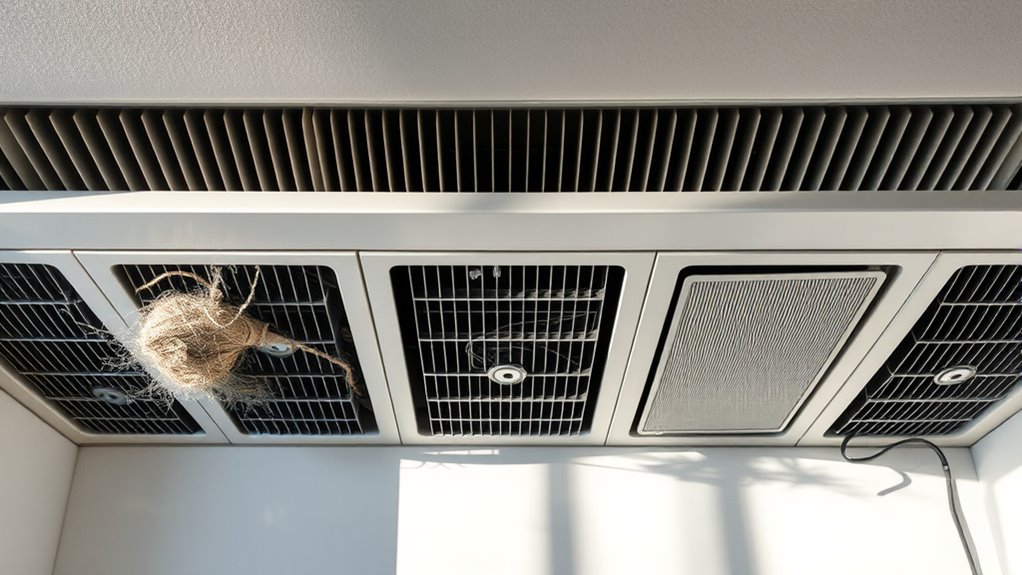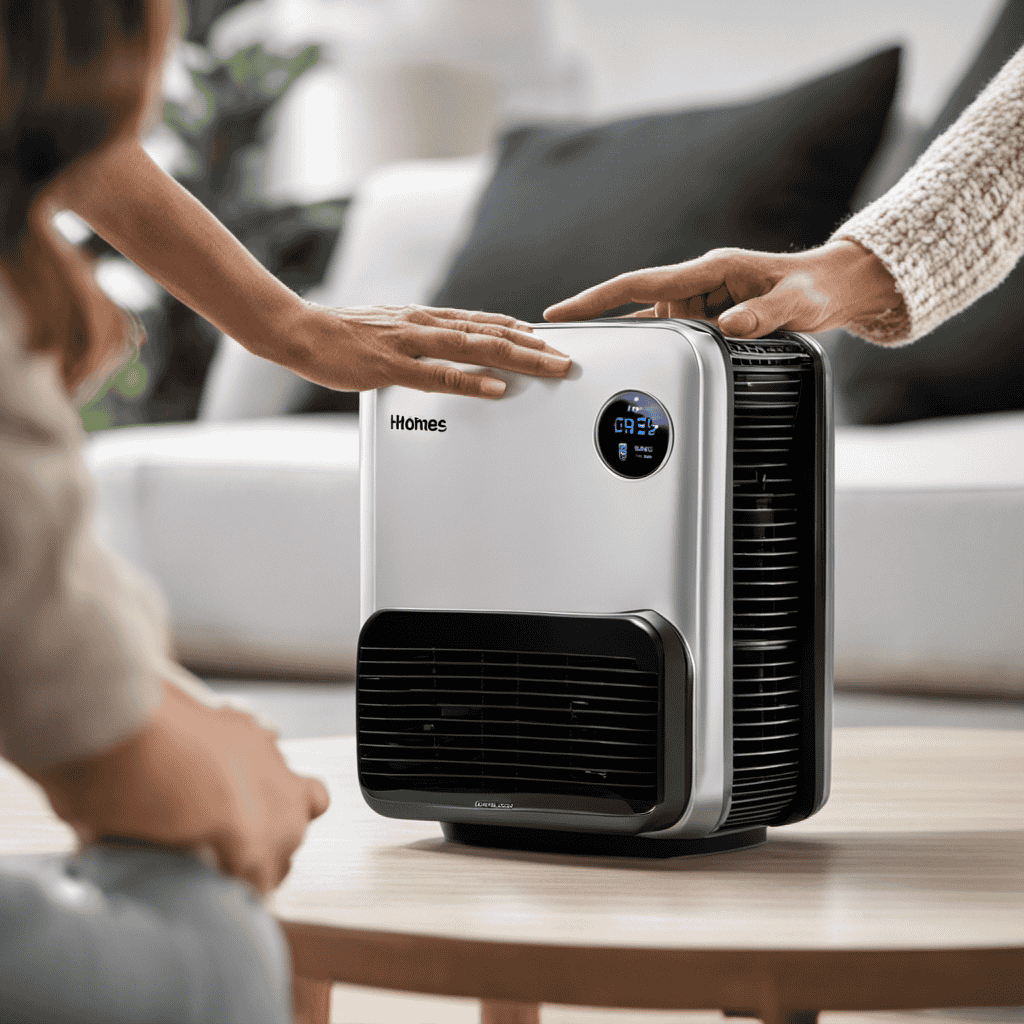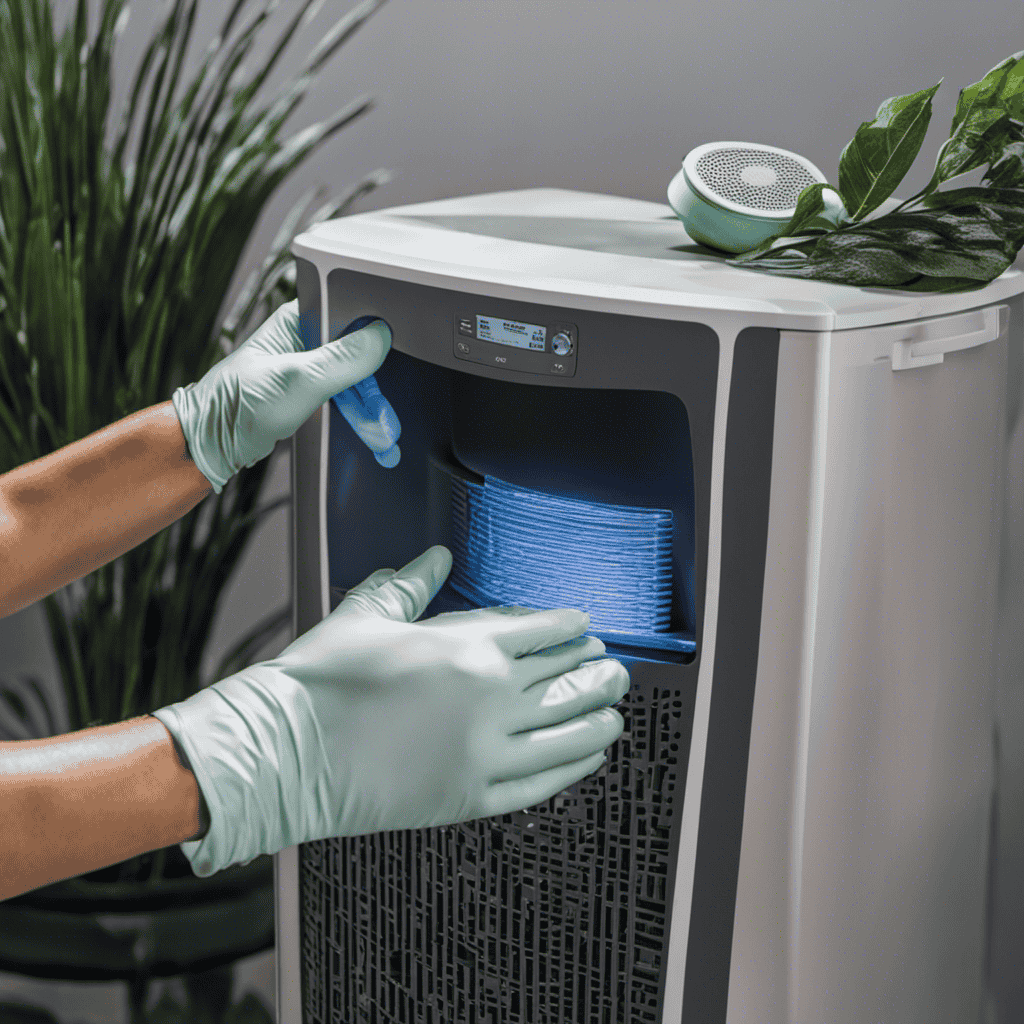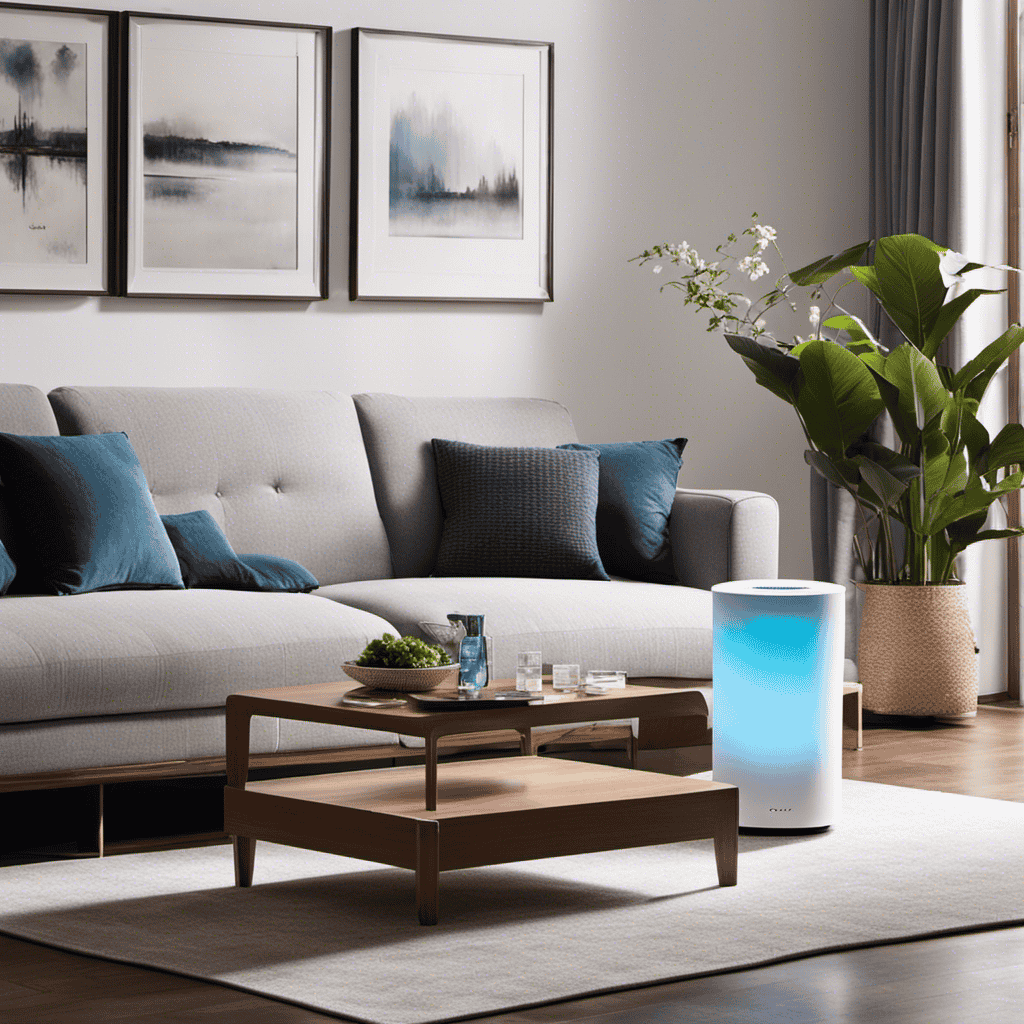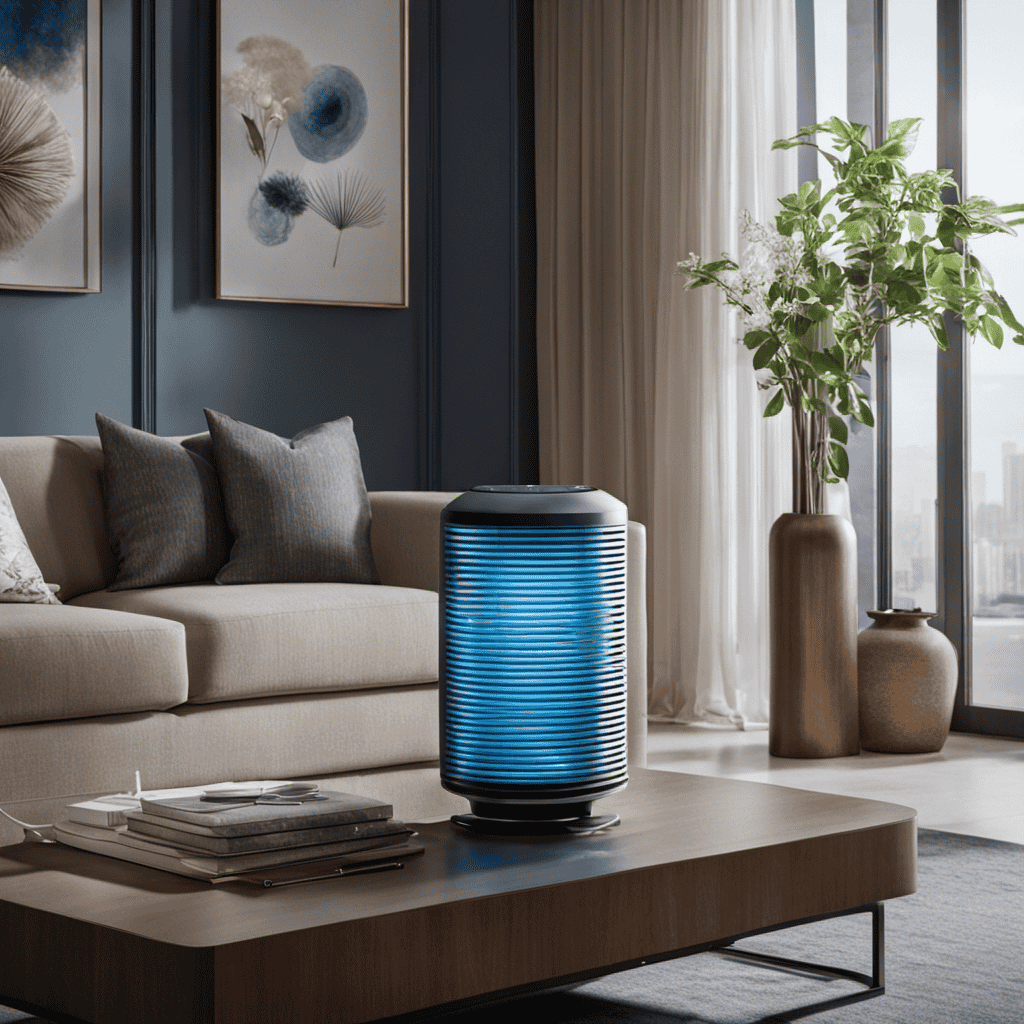To avoid killing airflow, focus on proper ventilation design to prevent stagnant spots, and position fans correctly near heat sources for effective cooling. Make sure to maintain and clean fans regularly to keep airflow strong. Balance the airflow direction to prevent hotspots and uneven cooling, and check your system often for signs of poor airflow. If you keep these in check, you’ll improve system performance—stay with us to learn exactly how to do it.
Key Takeaways
- Design ventilation systems that promote smooth, continuous airflow and prevent dead zones or stagnation.
- Place fans strategically near heat sources and away from obstructions to optimize airflow and reduce turbulence.
- Regularly clean and maintain fans and ventilation components to ensure maximum efficiency.
- Balance airflow direction and volume to prevent hotspots and ensure even cooling throughout the space.
- Avoid poor placement and design flaws that restrict airflow, leading to heat buildup and system strain.

Poor airflow can substantially impact your system’s performance and lifespan, but many common mistakes undermine it without you realizing. One of the biggest culprits is overlooking proper ventilation design. If your space isn’t ventilated correctly, air can become stagnant or circulate inefficiently, causing heat buildup and increased strain on your equipment. When planning your ventilation, consider the flow of air through the entire area. You want a system that encourages fresh air to enter and stale air to exit smoothly, without creating pockets of dead space. Poorly designed ventilation can lead to uneven airflow, which hampers cooling and increases the risk of overheating. It’s not just about installing vents; it’s about designing a system that promotes continuous, balanced airflow throughout the space.
Fan placement plays a vital role in maintaining effective airflow and avoiding dead zones. If fans are incorrectly positioned, they may push air in directions that don’t promote proper circulation, or worse, cause turbulence that reduces efficiency. You should position fans strategically—near heat sources or areas prone to stagnation—to draw hot air out and pull cool air in. Avoid placing fans too close to walls or corners, as this can restrict airflow and create areas of poor ventilation. When fans are optimally placed, they work with your ventilation design to create a steady, consistent flow that keeps equipment cool and air fresh. This not only improves performance but also extends the lifespan of your system components.
Additionally, neglecting to maintain your fans and ventilation system can turn these issues into bigger problems. Dust buildup on fans reduces their efficiency, leading to weaker airflow and increased noise. Regular cleaning and inspection ensure your fans operate at peak performance. Similarly, outdated or poorly designed ventilation systems can become restrictive over time, so reassess your setup periodically to identify improvements. Remember, airflow isn’t just about moving air; it’s about moving the right amount of air in the right directions at the right times. Proper ventilation design and fan placement are key to achieving this balance, ensuring your system runs smoothly and lasts longer.
Frequently Asked Questions
How Does Airflow Impact Indoor Air Quality?
Airflow profoundly impacts indoor air quality by influencing airflow patterns and air exchange rates. Proper airflow ensures fresh air circulates throughout your space, removing pollutants and humidity. When airflow is restricted or poorly designed, it causes stagnant air, increasing indoor pollutants and decreasing air quality. You should optimize airflow patterns and maintain high air exchange rates to keep your indoor environment healthy, comfortable, and free of harmful contaminants.
Can Poor Airflow Cause Equipment Overheating?
Poor airflow can definitely cause equipment overheating. If your duct design isn’t optimized or your fan efficiency is low, air doesn’t circulate properly, trapping heat around your equipment. This lack of proper airflow prevents heat from dissipating, increasing the risk of overheating. To prevent this, make certain your ductwork is correctly designed, and your fans operate efficiently, maintaining proper airflow and protecting your equipment from heat damage.
What Are Signs of Inadequate Ventilation in a Space?
Think of your space as a breathing organism—if it struggles to exchange air, signs of inadequate ventilation show up. You might notice stuffy odors, excessive humidity, or stagnant air that leaves you feeling lethargic. Poor air exchange hampers ventilation efficiency, making your environment uncomfortable and potentially harmful. Keep an eye out for these signs to make certain your space stays fresh and well-ventilated, preventing airflow issues before they escalate.
How Often Should Ventilation Systems Be Maintained?
You should maintain your ventilation system at least twice a year to guarantee ideal airflow. During these checkups, you need to replace filters regularly to prevent dust buildup and improve air quality. Additionally, schedule duct cleaning to remove debris and blockages that hinder airflow. Regular maintenance keeps your system running efficiently, reduces energy costs, and ensures healthy indoor air. Don’t neglect these tasks to avoid airflow issues and maintain a comfortable environment.
Are There Differences in Airflow Needs for Residential and Commercial Spaces?
When considering airflow needs, you should recognize that residential and commercial spaces have different ventilation design requirements. Residential areas typically require less airflow for comfort and air quality, while commercial spaces need optimized airflow to handle larger volumes and maintain safety standards. By focusing on proper ventilation design, you can guarantee effective airflow optimization, preventing issues like stagnant air or excess humidity, and creating a healthier environment tailored to each space’s unique needs.
Conclusion
Don’t let these mistakes be the silent killers of your airflow. Like a captain steering clear of dangerous waters, you can navigate your space with awareness and care. Remember, proper airflow isn’t just about comfort — it’s about safeguarding your health and energy. By avoiding these pitfalls, you’re taking control, ensuring your environment breathes easy. Stay vigilant, and let your space flourish, for the flow you preserve today shapes the comfort you’ll enjoy tomorrow.
